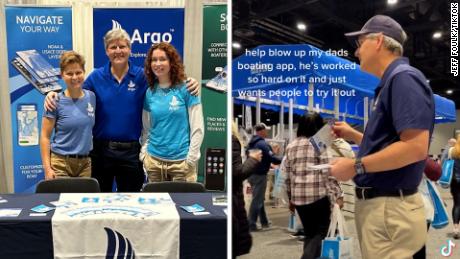Washington, DC (CNN Business)Uber took down the taxi industry and now it wants a piece of public transit. That has transportation and urban planning experts deeply worried.
For years, as it aggressively entered new markets, Uber has maintained that it is a complement and ally of public transit. But that messaging changed earlier this month, when Uber released its S-1 ahead of its upcoming initial public offering.
In the regulatory filing, Uber said its growth depends on better competing with public transportation, which it identifies as a $1 trillion market it can grab a share of over the long-term.
Uber, which lost $1.8 billion in 2018, said it offers incentives to drivers to scale up its network to attract riders away from personal vehicles and public transportation.
Transportation experts say that if Uber grabs a big chunk of its target market ŌĆö 4.4 trillion passenger miles on public transportation in the 63 countries in which it operates ŌĆö cities would grind to a halt, as there would literally be no space to move on streets.
"It's a world in which large cities essentially break down," said Christof Spieler, who teaches transportation at Rice University and wrote the book "Trains, Buses, People." "Try to imagine the island of Manhattan, and everyone taking the subway being in a rideshare. It just doesn't function."
Ride-hailing companies such as Uber have burned through billions of investor dollars to offer cheap rides. The taxi business has been devastated as a result and cities have scrambled to measure ride-hailing's impacts, from congestion to worker wages. Uber has pointed to research presenting a positive impact on the economy, and embraced congestion pricing, a popular solution to gridlock among urbanists. Now, as it prepares to go public, Uber is painting an even grander vision for investors, with a massive growth opportunity in attracting riders away from public transportation.
But transit experts warn that when riders shift from buses and subways to ridesharing sedans and SUVs, they're taking up much more space, leading to congested roads.
"It's taking us back to a city where there's less and less space for public transit," said Jarrett Walker, a transportation consultant. "It may make sense to pursue that [business] strategy, but it may also be a strategy that's destroying the world. It's certainly destroying the urban world."
A shift from public buses and trains to Uber could also have impacts on transportation workers' quality of life. Public transit jobs are generally considered more desirable than driving for Uber, given differences in compensation and high turnover rates among ride-hailing drivers.
In a statement, Uber said its goal is to extend and complement existing city infrastructure.
"As we move towards our vision of becoming a one-stop shop for transportation in cities, we want riders to have the right option available at their fingertips for every trip. Many times, it can be faster or cheaper to take public transportation than any other form of travel," Uber said. "That's why we've begun to integrate transit into our app, and why we'll continue to partner with local leaders and transit agencies as we work to reduce personal car ownership."
Uber's rival Lyft didn't describe public transportation as a competitor in its S-1. But while the corporate mission may be different, in practice there's little difference, experts say.
"In terms of the basics of how they function in the city, they're the same thing, competing for the same trips and using the same amount of street space," Spieler said.
Lyft described itself in a statement as a valuable part of multimodal transportation systems that allow people to live without owning a car.
"Lyft is confident that our service is a complement to public transit," spokeswoman Alexandra LaManna said. "We are committed to effecting positive change for our cities by promoting transportation equity through shared rides, bikeshare systems, electric scooters, and public transit partnerships."
Bruce Schaller, a transportation consultant who has researched the impact of ride-hailing on public transit, expects that cities will be forced to intervene and add restrictions to ride-hailing services such as Uber to prevent negative consequences. New York City, for example, has capped the number of ride-hailing vehicles and is developing congestion pricing, an additional fee for driving in part of the city.
"To have this big company about to go public, being so upfront about well, we're going after your public transportation rider, even though we know this is bad for cities, it's just very jarring," Schaller told CNN Business.
Public transportation ridership is declining nationally, making it harder to pay for a $90 billion maintenance backlog that a 2015 US Department of Transportation study found.
Jeff Speck, a city planner and author of the book Walkable City Rules: 101 Steps to Making Better Places, said he felt personally hurt by Uber's new candor on public transportation.
Speck said he spoke at Uber's San Francisco headquarters in October 2017, and talked to employees about the danger of overly designing cities around car transportation.
"I was one of many people who was suckered into that, 'at least their intentions were good,'" Speck said. "There are many people at Uber who really believed that line about transit, and I'm curious how they're feeling right now."






















